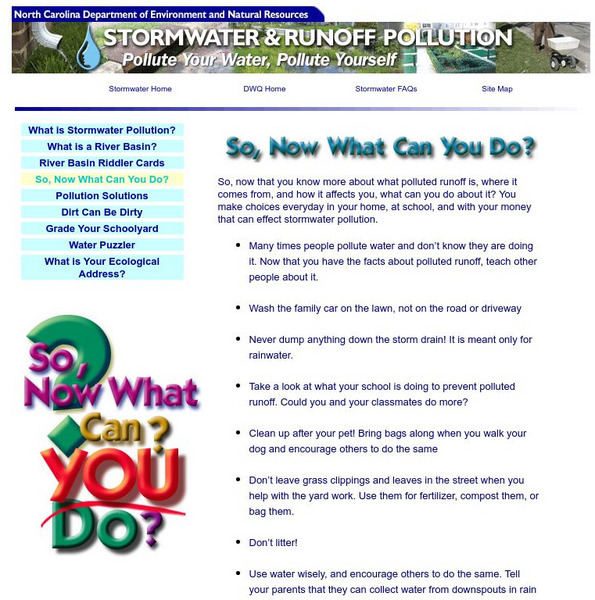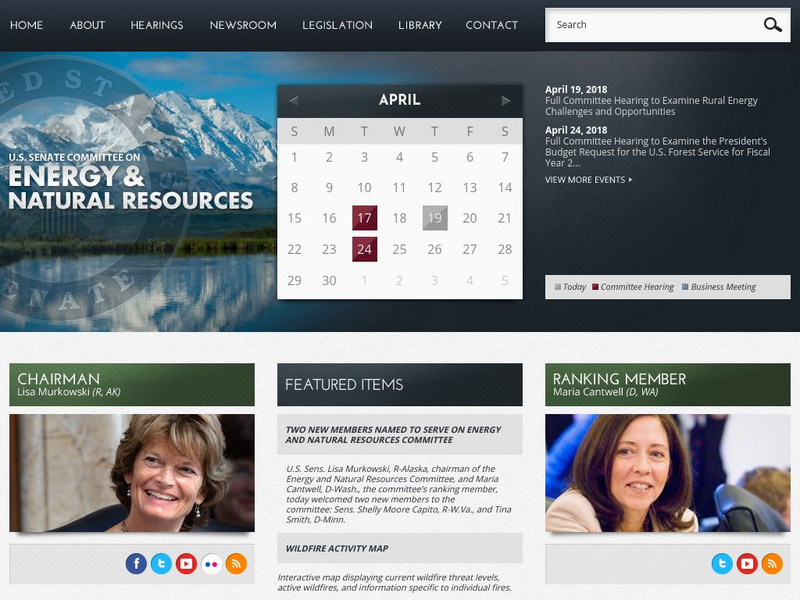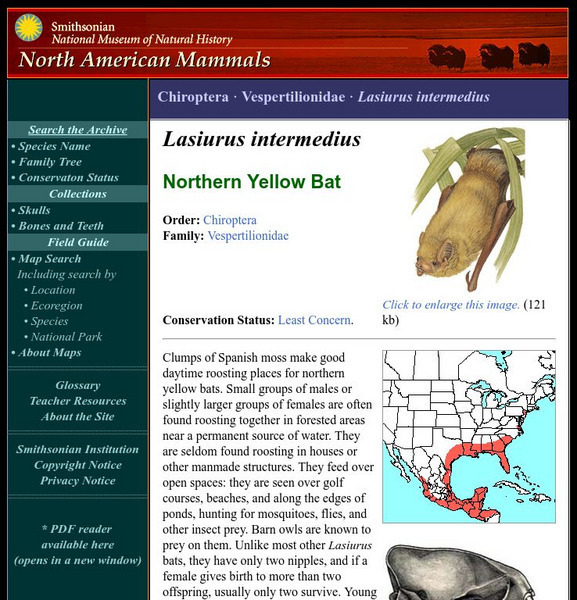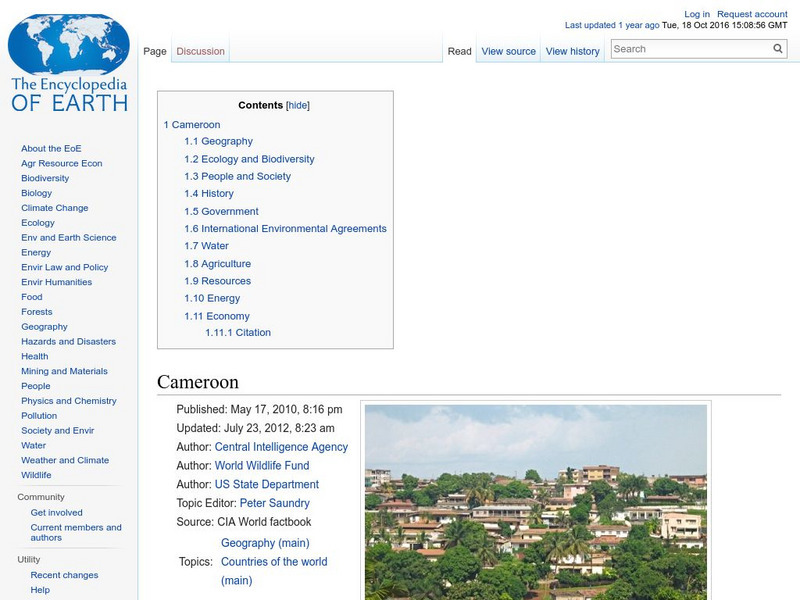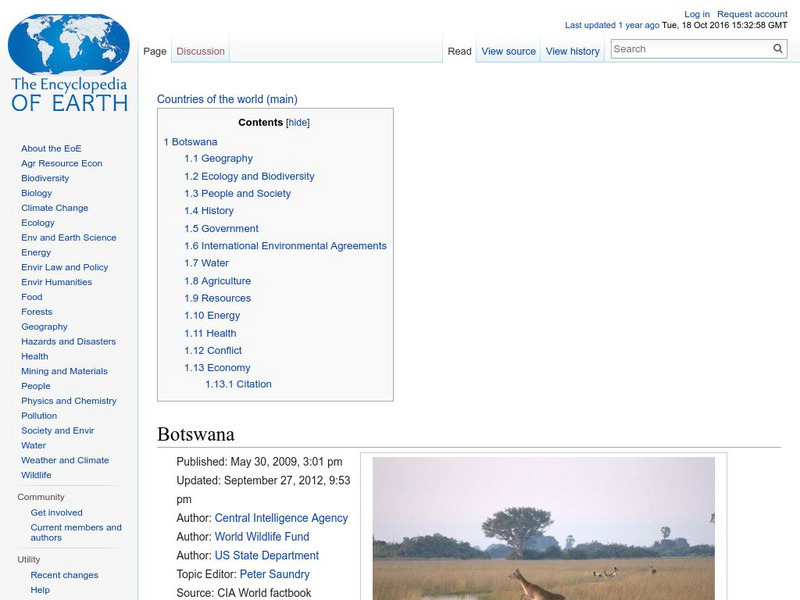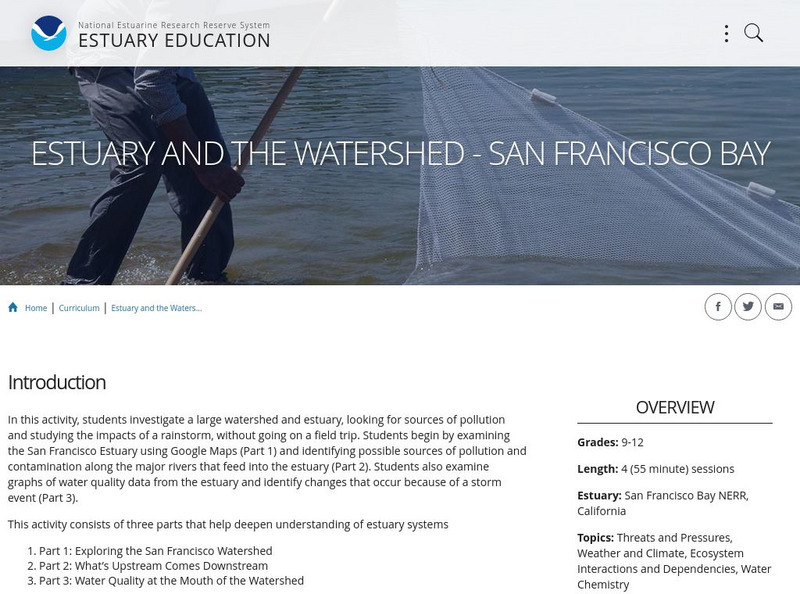Hi, what do you want to do?
Other
Vitamin C Supplementation
Know the difference between getting enough vitamin C and overdosing, learn how vitamin C helps those with certain health problems, and find out whether or not you should be taking a vitamin C supplement. This site also includes...
Other
Nc Department of Energy and Natural Resources: So, Now What Can You Do?
A list of ways people can make good choices in everyday activities so as not to contribute to stormwater pollution.
Other
Abc Da Energia
ABC Da Energia describes the many ways that energy can be obtained and conserved. It explains different sources of energy, how each works, and how energy can be saved in our daily lives. Interactive energy-saving activities and games...
PBS
Pbs Learning Media: Primary Source: Environmental Preservation Progressive Era
This collection uses primary sources to environmental preservation in the Progressive Era.
PBS
Pbs: Pov Borders: Environment
Point of View is television's longest running showcase for independent non-fiction films. This particular feature provides insight regarding alternative means of energy, transport, and the consumption of natural resources. Video, games,...
Globe
The Globe Program: Learning to Benefit the Environment
The GLOBE program is a worldwide network of students and scientists working together to monitor Earth's atmosphere and water. There are lots of resources here, and you can email a student involved in the program to learn more about GLOBE.
TeachEngineering
Teach Engineering: Photosynthesis Life's Primary Energy Source
This lesson covers the process of photosynthesis and the related plant cell functions of transpiration and cellular respiration. Students will learn how engineers can use the natural process of photosynthesis as an exemplary model of a...
US Senate
U.s. Senate Committee on Energy and Natural Resources
The responsibilities of the Committee on Energy and Natural Resources oversees important legislation in Congress and has distinguished itself as among the most nonpartisan in the Senate.
American Geosciences Institute
American Geosciences Institute: Earth Science Week: Properties of Fluids in Reservoirs
This investigation will help young scholars understand the physical relationships between natural gas, oil, and water in a reservoir and how these relationships can affect recovery.
Science Education Resource Center at Carleton College
Serc: Michigan Environmental Education Curriculum Module Index
Series of self-guided tutorials covers the topics of water quality, ecosystems, biodiversity, and energy sources including a summary of important concepts as well as a glossary.
Other
Planet Ark: World Environmental News
Welcome to Planet Ark's daily Reuters World Environment News - the most comprehensive source of environmental news on the Net. To read previous news stories, please use the search engine below to find stories relating to any...
Smithsonian Institution
National Museum of Natural History: American Mammals: Northern Yellow Bat
Clumps of Spanish moss make good daytime roosting places for northern yellow bats. Small groups of males or slightly larger groups of females are often found roosting together in forested areas near a permanent source of water. Learn...
Other
The Dirty Dozen Persistent Organic Pollutants
Use this site to learn about the effects of persistent organic pollutants on the ecology of Antarctic coastal waters. Information is presented for both teacher and student researcher.
The Franklin Institute
The Franklin Institute Online: Slick Sea Spills
Use this site to promote environmental awareness in your classroom with this lesson on the effects of oil spills on water habitats.
University of Texas at Austin
University of Texas: Human Environmental Interactions [Pdf]
Inspired by Hemispheres' 2004 Teachers' Summer Institute, People and Place: Human-Geographic Relations, this curriculum unit was designed to address human adaptation to and modification of the environment. How have humans adjusted to...
Encyclopedia of Earth
Encyclopedia of Earth: Burundi
Facts about Burundi including environmental issues, geography, government, people, water, economy, agriculture, health, natural resources, energy resources, and conflict.
Encyclopedia of Earth
Encyclopedia of Earth: Cameroon
Facts about Cameroon including environmental issues, geography, government, people, water, economy, agriculture, health, natural resources, energy resources, and conflict.
PBS
Nh Pbs: Nature Works: Rivers and Streams
Learn more about Rivers and Streams through this educational resource. This site features photographs, a description, fun facts, and more about this type of freshwater ecosystem.
Encyclopedia of Earth
Encyclopedia of Earth: Botswana
Facts about Botswana including environmental issues, geography, government, people, water, economy, agriculture, health, natural resources, energy resources, and conflict.
TeachEngineering
Teach Engineering: Environment
Through 10 lessons and more than 20 hands-on activities, students are introduced to the concept of an environment and the many interactions within it. As they learn about natural and human-made environments, as well as renewable and...
TeachEngineering
Teach Engineering: Rolling Blackouts & Environmental Impact
The goal is for the students to understand the environmental design considerations required when generating electricity. The electric power that we use every day at home and work is generated by a variety of power plants. Power plants...
NOAA
Noaa: Estuaries 101 Curriculum: Estuary and the Watershed San Francisco Bay
In this activity, students investigate a large watershed, look for sources of pollution in the watershed, and study the impacts of a rain storm on a watershed and estuary, without going on a field trip. Students investigate the nature of...
Curated OER
Science Kids: Science Images: Water Pollution
This image helps highlight the problem of water pollution that can effect various rivers, lakes and other sources of water.
TeachEngineering
Teach Engineering: Water, Water Everywhere
Students learn about floods, discovering that different types of floods occur from different water sources, but primarily from heavy rainfall. While floods occur naturally and have benefits such as creating fertile farmland, students...






